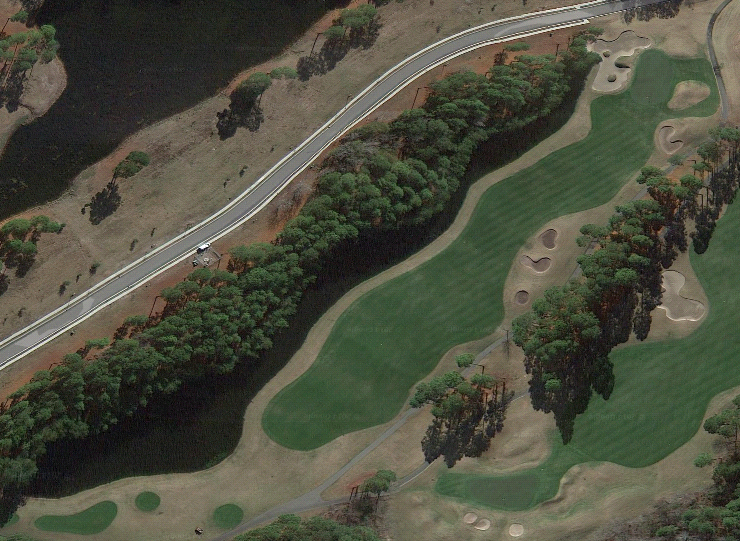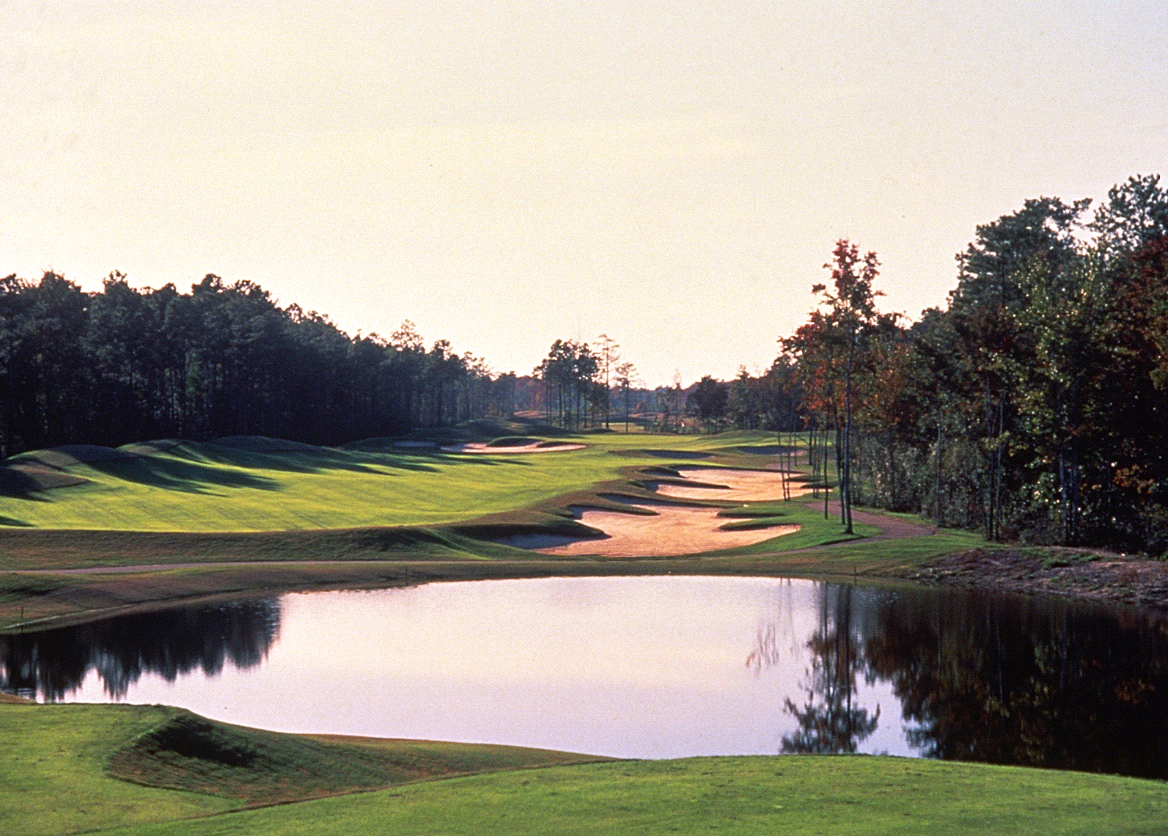Featured Golf News
The Heroic Shot
The classic Cape hole, as created by C.B. Macdonald at Mid Ocean in Bermuda, was the first "Heroic"-style hole. It has strategy, but with bolder water hazards, and carry, usually a feature of heroic shots. The angled water hazard makes golfers choose an exact line to max out their carry and distance to minimize approach-shot length.

5th Hole at Mid Ocean in Bermuda
Many modern architects (including yours truly) have built similar holes, usually with "tweaks."
More use the water carry on a par-5 tee shot, believing most need a one- to two-stroke birdie/eagle upside to risk the possible one- or two-stroke penalty for finding the water. In other words, the risk is proportional to the reward. The temptation to carry this hazard is reduced on most par-4s because the penalty remains high, while the maximum (but not guaranteed) reward is a slightly better birdie chance. Golfers take tee-shot risks when they:
Gain one or two strokes (i.e., on a short par-5 or reachable par-4);
Gain at least one to three clubs due to reduced distance (par-4);
Reduce approach from under 180 yards (making them popular on longer par-4s).

18th Hole at the Avocet Course at Wild Wing
(a Google Earth Image)
Other architects add bunkers down the far side to "keep golfers honest." But is this really necessary? In strategic theory, no, providing the safer shot adds approach-shot distance (it does) and/or the green design favors an approach from the left (it does, via slopes running left, causing difficulty in holding the green from the right). It may not punish golfers, but they do combine to favor a tee shot that hugs the shoreline.
So, why do so many designers add sand bunkers on the outside of Cape holes (or for that matter, other doglegs, where it is the longer route)? Ben Hogan once famously wondered why anyone would put a bunker on the outside of a dogleg. (Some call this tactic "guarding the long cut.")
At Wild Wing (Avocet Course) in Conway, S.C., Larry Nelson and I used two Cape holes, both on long par-4s. For variety and a draw/fade balance, we used one left, one right, with one having a water hazard and the other sand (each are more recoverable hazards for resort guests who slice).

Avocets 10th Hole
(a Google Earth Image)
Both have fairways angled at about 20 to 25 degrees to the tee shot, which in my experience works best. Shallow angles are really "lateral" and not "carry," hazards. Sharper angles (Mid Ocean is probably at 45 degrees) don't allow enough stopping or run-out room, and don't favor working the ball as part of the shot.
A nearly straight edge, as the 10th hole at Avocet has, is conceptually stronger and more difficult to read, while the 18th pond and fairway edge have a bit of a naturalistic curve to them (too much would affect the strategy). The 10th is "pure Cape" with no left-side hazard. The bunker front-left of the green is the only penalty for hitting well wide of the sand. On 18, we added flanking fairway bunkers on the far side of the fairway. Our thoughts on this were:
18 should be tougher;
The holes would look different and add visual variety;
Larry favored an "aiming bunker" on tougher water shots (like those used by many PGA Tour pros);
While more difficult for good players, it doesn't hurt resort players who find the normal landing zones.
There are places for both styles of the Cape hole, and most golfers seem to prefer one on nearly every course.
Jeffrey D. Brauer began his career as an apprentice in the Chicago area in 1977. His first project was Kemper Lakes, which shortly after hosted the 1989 PGA Championship. He formed GolfScapes in Arlington, Texas, in 1984. In the last 29 years he has designed and consulted on a wide spectrum of projects, ranging from partial renovations to international resorts. His recent work includes teaming with the design team of Pascuzzo and Pate on a remodel of the world-famous La Costa Resort & Spa in California, and renovations at Superior National Golf Course in Lutsen, Minn., and Mesquite Municipal Golf Course in Mesquite, Texas.
He has been a member of the American Society of Golf Course Architects since 1981, serving as President during its 50th Anniversary year in 1995-96. Jeff still studies the classic works - both old and new, and has played more than 75 of the best courses in the world.
Jeff gives many presentations and is a regular architecture columnist for many publications and websites, including Golf Course Industry and Cybergolf.com. He has also been a strong advocate for the "Tee it Forward" campaign and strives to make his courses fit the description of "fun to play every day."
Jeff's work has been spotlighted in most of the world's major golf magazines. Golf World ranked him as one of the top-20 golf course architects and Golf Inc. ranked him as the world's fourth-best value in golf architecture in 2010. Jeff's portfolio and reputation keep him at the forefront of desired designers for new courses, reconstruction and renovation projects. For more about Jeff, visit http://www.jeffreydbrauer.com/sites/courses/layout.asp?id=859&page=48451.
Story Options
 |
Print this Story |
